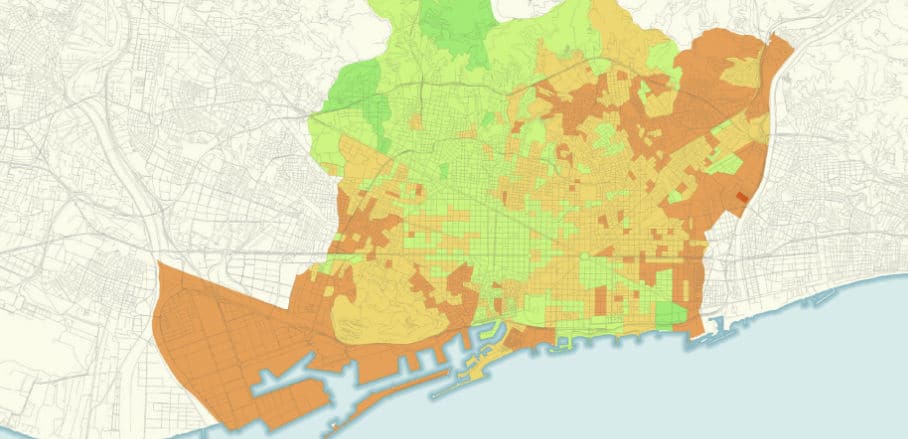Four Strategies for Building Resilience to Extreme Weather Events
As extreme weather events are becoming more frequent, cities must adapt strategies and actions to protect their most vulnerable citizens. Mary Sheehan outlines the implications of worsening climate conditions and presents actions to increase the resilience of cities around the globe.
It is a chilly night, and it has started to rain. You are a young mother living in a shanty town on a steep slope at the edge of a large city. Recently, there has been a dengue fever outbreak. Your children are hungry and suffer from diarrhoea and persistent cough. You already had to flee from water shortages and conflict in your homeland, seeking a better life. While drought conditions had worsened there, you did not expect worsening weather here as well. Suddenly it is dark, as the makeshift connection to the power line fails. Torrents of rainwater are now pouring through the corrugated tin roof, and the small street has become a river. Without warning, the storm had arrived.
This is a reality for many. Globally, well over one billion urban dwellers lack affordable and safe shelter according to the think-tank World Resources Institute. Extreme precipitation and flooding – but also heatwaves, tropical storms, wildfires, and other extreme events – affect the health, safety and wellbeing of city residents, particularly those living in precarious or poorly-built housing. The youngest, the oldest, women, and those already ill are most at risk.
Urban reliance on interconnected infrastructure – roads, electricity, water, drainage, housing – also means that city dwellers face not one but a series of cascading risks to health. Electric power interruption caused by a storm affects potable water and refrigeration, increasing the risk of infectious disease in addition to the risk of death, injury, infection, and mental stress due to the event itself. Compound risks involving multiple hazards at once – most recently extreme weather co-occurring with the Covid-19 pandemic – also affect cities more profoundly due to densely concentrated populations and the challenges of sheltering.
Cities are Working on Protecting the Most Vulnerable
The good news is that cities in all world regions are acting to better protect their most vulnerable populations’ health, safety and wellbeing from extreme weather. Four short-term actions are key to building resilience: (1) understanding health risks, (2) mapping hazards and risks to identify vulnerability, (3) implementing early warnings and alerts, and (4) fostering preparedness and community outreach.
For example, data from the climate information organisation CDP suggest that large cities globally share several core climate-related health concerns: diseases caused by air pollution, extreme heat, disease vectors and water-borne microbes top the list. Knowing this can help cities to choose adaptive strategies, including expansion of urban forests, wetland restoration, watershed conservation, and enhanced mosquito management to reduce these risks. To identify the most vulnerable populations, cities across world regions have developed climate hazard and risk indexes and mapped them to determine which neighbourhoods are at greatest risk and why. Examples of mapping include Barcelona’s heat risk maps and San Francisco’s flood hazard maps. Poor housing is shown to be one of the most common factors affecting vulnerability in cities in high-income as well as low- and middle-income countries.
City early warning and alert systems are also increasingly implemented in cities around the world for hazards as varied as extreme heat, flooding, landslides, and wildfire. The Bangladesh Multi-Hazard System has already benefited Dhaka and other urban centres. It is low-tech and involves loudspeakers and volunteers on bicycles warning of hazards that range from earthquakes to monsoons to river flooding. Alert systems may also employ sophisticated information technology, such as the Operations Centre in Rio de Janeiro that carries out “nowcasting” of weather events and their impact on dozens of city infrastructure and services in real-time based on smart-city sensors. Meanwhile, preparedness activities resulting from the increased knowledge base, that health data, vulnerability mapping, and alert systems provide, are on the rise in cities globally; for example, Ahmedabad in India developed South Asia’s first heat action plan, while Singapore has created a widely disseminated global water management approach to water scarcity.
Cooperation is Key to Building Climate Resilience
City public health agencies are essential partners in such efforts. Local public health teams have in-depth epidemiological knowledge and can help target interventions to those who need them most; research suggests that adaptation efforts are more likely to reach the most vulnerable when public health agencies are engaged. Close coordination on climate resilience planning of public health agencies with city planners, emergency management, and those responsible for urban greening, water management, environmental planning, and meteorology can help to safeguard the population´s health, safety, and well-being.
Climate change has placed us in uncharted territory. Those affected by recent extreme events express shock at their rapidity and intensity: “We didn’t expect it to be this bad this quickly” is a commonly repeated refrain. These four measures, along with the close collaboration of urban planners and public health agencies, are showing that there are resilience strategies that work to protect the most vulnerable urban residents.
- Four Strategies for Building Resilience to Extreme Weather Events - 29. September 2022
